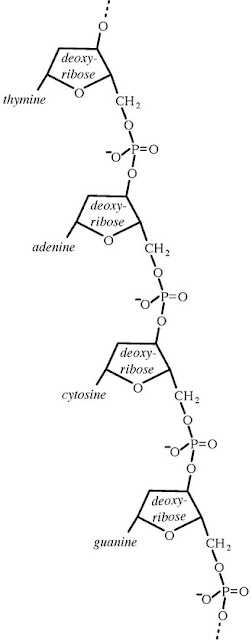DNA
as Genetic Material-Experimental Proof
Part I- The Transformation Experiments- Dr. C R Meera
Three
simple experiments, done with great care, identified DNA as genetic material.
They included:
1. The
transformation experiments (Griffith/Avery, McLeod & McCarty)
2. The
chemical experiments (Chargaff)
3. The
Blender experiments (Hershey & Chase)
I. The
Transformation Experiments
The
first experimental proof for DNA as genetic material was by Fred Griffith in
1928. He was studying the human bacteria causing pneumonia, Streptococcus
pneumoniae or Pneumococcus. Its virulence is attributed to its
polysaccharide capsule that protects it from body defense. On Nutrient agar
media, the organisms produced colonies with smooth edges due to the presence of
capsules and are called “S colonies”. When these organisms were injected into
mice, it caused the death of the animal. This means, S colonies are lethal.
Griffith
could isolate mutants of the organisms which were producing rough-edged
colonies and named them “R bacteria”. They were non-encapsulated and non-lethal
when injected into the mice.
He
further experimented with “heat-killed S” colonies which were again non-lethal
as “R colonies”. A significant observation made by Griffith was that when he
injected the mixture of “R live” and “heat-killed
S”, it resulted in the death of the mice. He also isolated the bacteria from
the dead mice and surprisingly it was found to be “S live”. He thought that the
“R live” was replaced or transformed into “S live” forms within the mice.
After
several years, it was found that mice are not necessary for this transformation.
The same experiments were carried out in In vitro models. “R live” and “heat-killed S” cells were grown
together in culture media and “S live” cells could be isolated from the same.
And it was concluded that “R cells” restored the viability of “S cells”. But
this idea was eliminated later due to another experiment in which “R cells” and
“cell extract of heat-killed S cells”(extract was prepared from broken S cells
and freed from both intact cells and capsular polysaccharides) produced “S
live” strain. This experiment concluded the “cell extract” as the “transforming
principle” nature of which was unknown at that time.
Fig.2. Experiment
with live “R cells” and “cell-free extract of lysed S cells”
The
next development occurred some 15 years later in 1944, when Oswald Avery, Colin
McLeod, and Maclyn McCarty partially purified the transforming principle from
cell extract and demonstrated that it was DNA.
However
biochemical investigation of DNA had begun in 1868 with Freidrich Miescher.
Ø Miescher
isolated a phosphorous-containing substance from nuclei of pus cells or
leukocytes in the discarded surgical bandages. He named it “nuclein”. Nuclein
consisted of acidic and basic portions. The acidic portion is now known as DNA
and the basic portion is protein.
Ø Later, Miescher discovered the same “acidic” substance in the heads of the sperm cells of salmon. However, he could partially purify nuclein and studied its properties. However, its primary covalent structure was not known till 1940s.
The
first direct evidence for DNA as the bearer of genetic information came in 1944
by the experiments of Oswald Avery, Colin
McLeod, and Maclyn McCarty. They extracted DNA from heat killed S
strain (virulent), protein was removed as much as possible. It was then mixed
with non-virulent R strain. DNA gained entrance into the R cells by the process
of transformation (transformation is defined as the genetic alteration of a cell which
is caused by the direct uptake and
incorporation of exogenous genetic material from its surroundings through the cell membrane).
In this experiment “non-virulent R strain” was permanently transformed into the
“virulent S strain”. The procedure for
purifying DNA at that time was not perfect and contained many impurities.
Hence, necessary evidence for transformation by DNA was given by Avery, McLeod, and McCarty using the following
procedures.
1.
Chemical analysis of transforming
principle- Chemical analysis revealed the major component as
deoxyribose containing nucleic acids
2. Physical
measurement – The sample contained highly viscous
substance with physical properties of DNA
3. Enzyme
reactions- Transforming principle was treated first with
proteolytic enzymes like trypsin, chymotrypsin, or both.
Also treated with
ribonuclease (RNA depolymerizing enzyme). Transforming activity was not lost
when the treated transforming principle was mixed with the R strain, indicating
that neither proteins nor RNA is the active principle.
Treatment with DNase (catalyze the
hydrolytic cleavage of phosphodiester linkages in the DNA backbone and degrade
DNA) inactivated the transforming principle which was a shred of clear evidence
for DNA as genetic material.
Through
these procedures, Avery, McLeod, and McCarty concluded
that the transforming principle they isolated is DNA.
But
the scientific community of that time was not ready to accept their
conclusions. Because, whatever the genetic material was, it was expected to be
a substance capable of the enormous variation in order to contain information
carried by the huge number of genes. At that time, DNA was known as a
tetranucleotide only (tetranucleotide hypothesis), so could not be considered the
sole material of genetic information.
Early experiments suggested that 4 bases (adenine (A), cytosine (C), guanine (G), and thymine (T)) occur in equal ratios in nucleotides. After discovering the location of nucleic acids on chromosomes, the tetranucleotide hypothesis was put forward by Phoebus Levene in 1929. Ribose sugar and Deoxy ribose sugar were discovered by him in 1909 and 1929, respectively. In the tetranucleotide hypothesis, Levene suggested that nucleic acids are repeating tetramers. In other words, DNA is composed of repeating sequences of four nucleotides. He called the Sugar-Base-Phosphate unit a nucleotide. Also said that the simplicity of this structure of DNA was too uniform to contribute to a complex genetic variation. Hence, DNA could not be the genetic material. Thereafter, attention focused on proteins as the probable hereditary substance.
Fig 3. Tetranucleotide hypothesis: Repeating tetranucleotide unit
(Image courtesy:
en.wikipedia.org)





No comments:
Post a Comment
Note: Only a member of this blog may post a comment.